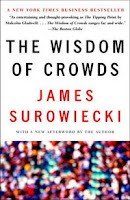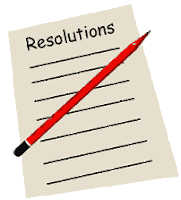When people ask us what our unit does, the Learning and Leadership Unit, we often say that we do capacity development by stealth. That is, we focus much more on informal learning than on the more obvious training courses to help build capabilities and improve the overall effectiveness and impact of our organization and its staff through this learning.
We still do the odd training course – on systems thinking tools, on blogging, on developing facilitation and teambuilding skills, or using productivity-enhancing approaches such as Zero-in box. However we have found that busy people do not have the time to attend training, and the higher you go up the hierarchical ladder, the less time you may feel you have.
So the informal learning approach, much heralded by the private sector as the highest impact way to make learning interventions, has become our main modus operandi. I would say this approach as it has been formalised in recent years and its language is still quite new in the NGO sector. We have been working with this approach for the past 3 years. What kind of things have we done to promote informal learning?
To create new learning opportunities, early on, we developed and lightly programmed a weekly Sponsored Coffee morning that still gets people together for social networking to learn new things from colleagues they may not always meet in their well-worn pathways around the building. When our first training course on the subject did not get a high response rate, we integrated systems thinking tools instead into visioning and strategic planning workshops. To reverse a deficit frame (common in the sustainability community) we used Appreciative Inquiry questioning techniques into our designs. And to reinforce the asset-based language and viewpoint, we introduced the Strengthsfinder diagnostic tool into our own team, and based on our learning developed a facilitated sequence with the results that we have now woven into the many team retreats we facilitate. In the last three years we have worked with over half of our headquarters staff with this interesting tool. To soften the walls of our institutional silos and foster more collaboration, we built into regular meetings innovative games and techniques such as World Cafes and Open Space Technology among many others that help build relationships, encourage people to share their ideas, and help people practice joint problem solving and co-creation of ideas. To embed and model teamwork, trust and collaboration, we also coach our colleagues in meeting design and facilitation and no longer do all the events ourselves. But none of this we have done through training.
An issue is, however, that training is obvious. It has a schedule, a meeting room, a reserved table in the cafeteria and a cow bell to call people back after coffee breaks (at least in our Swiss-based institution). It also has a set of known metrics attached to it, and a defined beneficiary group, who know that they are being trained because they are sitting in the training room for several days with other learners. Therefore you can easily report on training – the number of training days, how many people were trained, how much budget is spent per person on training, and through standard evaluations, with quantitative and qualitative questions, you can provide data to anyone who wants to know, about what has been learned by those people in your training courses.
The metrics around informal learning are unfortunately less obvious. People’s experience and time spent in informal learning is more streamlined and hidden in their day. They need a great deal of reflection to notice what they are learning, and rarely have a forum to report on it. In most workplaces, which are go, go, go, reflective practice is sporadic (which is why we build so much of it into our meetings and workshops), and there really is no place for people to capture and document their learning (which is why we started this blog in the first place – for ourselves, to do this.)
Which means that when it comes time for budget discussions, in a time of global financial crisis, it is possible, that the work of a team that does informal learning may not so obvious.
Recently, in Chief Learning Officer’s online magazine (a terrific e-zine by the way), Jay Cross, author of the book Informal Learning: Rediscovering the Natural Pathways that Inspire Innovation and Performance, wrote a provocative article called “Get Out of the Training Business“. In this article Jay reinforces his premise that informal learning is the learning mode of the future, and training is based on the workplace format of the past. We have indeed taken this to heart over the last few years of our work in our institution. Informal learning, I am convinced, is the right paradigm for the learning organization of the future. However, it will also take a paradigm shift to help decision-makers from all our institutions see its value. And one work area for informal learning practitioners continues to be creating the metrics that make it visible and valued, so that even if the work is done by stealth, the impacts and the activities that inspired them are completely obvious to everyone. In this time of financial crisis, making these causal links (loudly) is particulary important; they might not be as obvious to others as they are to you.

 What kind of creative process produces ideas like a
What kind of creative process produces ideas like a 






 I received an email from my Father-in-Law this morning, with a nice little learning story which I thought I would share here. It goes as follows:
I received an email from my Father-in-Law this morning, with a nice little learning story which I thought I would share here. It goes as follows:

 Everyday I commute for two hours, traveling an hour to and from work with chunks of the journey by foot, tram, train and bike. For the past three years, this has been a time for thinking, reading and chatting with other commuter colleagues – on both professional and personal matters. The time has always been a much appreciated ‘wind up’ to and ‘wind down’ from the hours in the office. A recent addition to my commuter repertoire has made it even more enjoyable! – Podcasts.
Everyday I commute for two hours, traveling an hour to and from work with chunks of the journey by foot, tram, train and bike. For the past three years, this has been a time for thinking, reading and chatting with other commuter colleagues – on both professional and personal matters. The time has always been a much appreciated ‘wind up’ to and ‘wind down’ from the hours in the office. A recent addition to my commuter repertoire has made it even more enjoyable! – Podcasts. James Surowiecki has popularized the concept of
James Surowiecki has popularized the concept of 




